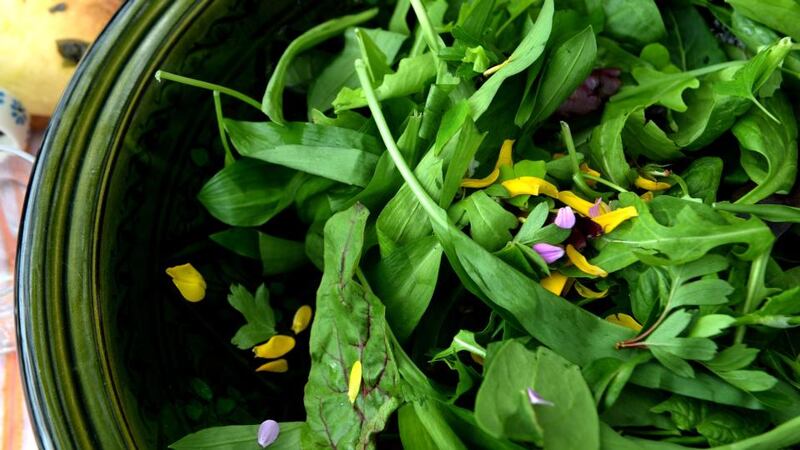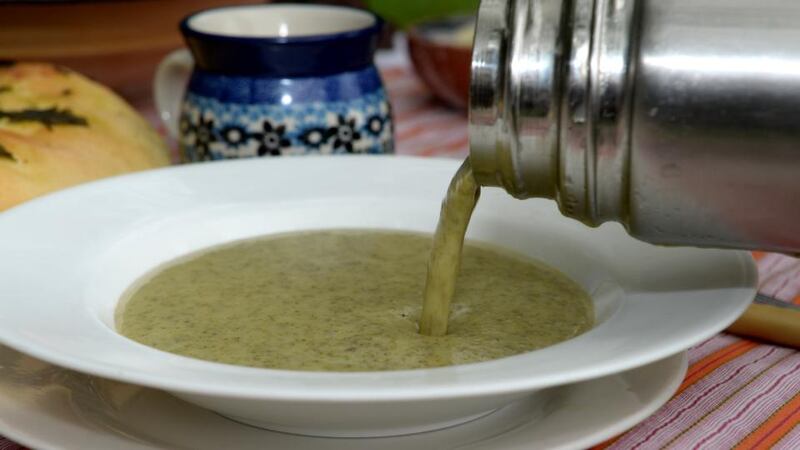[ irishtimesfoodOpens in new window ]
After two particularly cold winters – one of which left her and her husband housebound for five weeks . . . with three children . . . under five years old – Geraldine Kavanagh became interested in foraging. "We managed to get to the shops twice during the five weeks, and even then food was starting to run out in the village," she says. "I remember just feeling so ashamed, as a parent, that I didn't know how to get food for my children."
The Wicklow native grew up with a 200-hectare playground of mature woodland, Avondale Forest Park, on her doorstep. “We would go there pretty much every day after school,” she says, and the conversation turns to the good old days, before children became slaves to the screen. Now she brings her own children foraging along the local hedgerows.


“They’ve got to the point where they’ll say, ‘Can you eat it?’ and if they can’t eat it they’re not interested.”
She set up Wild Wicklow Foods, which, as well as selling produce at Macreddin Village food market and providing wild food cookery demonstrations, organises guided foraging walks.
While my nostalgia extends to robbing orchards, picking blackberries and running wild until the crash after a sugar sandwich kicked in, I’ve brought my mother along for back up.
She looks askance at Kavanagh when asked if she foraged as a child – it was far from foraging the Somers children were raised, etc. “We’d eat everything and anything,” she says. “We grew up a couple of miles outside the village, so you’d munch on the way to school and back.”
Alas the greens did nothing for her memory (“What’s this we used to call them…?”) but as we stroll along a quiet Wicklow road, and Kavanagh points out a hawthorn here (“bread and cheese” the tasty leaves and flowers were called) and a sorrel plant there, the flavours bring her back.
And what flavours.
Lemony wood sorrel, peppery ground elder, delicate chickweed, and pungent wild garlic for as far as the eye can see and our grubby little hands can forage. “It just takes over wherever it grows,” says Kavanagh.
Along the way Kavanagh points out tasty morsels and fills us in on the health benefits of common weeds such as nettles (to cleanse the blood) and cleavers (to cleanse the lymph system) – although most of us know the latter as Sticky Willy or Goosegrass.
We also learn how to pick – and eat – a nettle without getting stung and how to tell sorrel apart from its poisonous lookalike.
Kavanagh is a font of knowledge when it comes to various ways to use up and preserve your foraged bounty, whether in gin or dressings, as syrups or to flavour ice-cream (see panel).
“These can be crystallised and used to decorate cakes,” she says, pointing to a patch of dainty sweet violets. “It’s a great one to get kids to do. You use little brushes to paint them with egg whites, dip them in castor sugar and let them dry.”
We’re a couple of seasons out, but we can’t leave without asking about mushrooms.
I’d give up most modern comforts to travel back in time and eat the mushrooms of my mother’s childhood: “My father would tell us when it was time and we’d head down the fields, about two fields over, to pick them,” she says, and my mouth is already watering. “We’d pick this long grass and string the mushrooms along it to carry them back, and then we’d fry them in butter.”
Last year brought a bumper crop of porcini mushrooms, which Kavanagh and her girls would pick all day, coming home laden down and covered in twigs. “We’d get cleaned up and head into the city with buckets of them,” she says. “The girls got to go from the mountains to these big fancy restaurant kitchens – it was great. One chef – I won’t say who – just stood there smelling one of the mushrooms for minutes . . . I wonder what he was thinking.”
See wicklowwildfoods.com for walking tour dates; €30 per person including wild-food picnic lunch
Foraging tips
1 Never eat a wild plant unless you are sure of its identity.
2 Avoid foraging along busy roads and beware of areas that have been sprayed with herbicides.
3 Watercress and Brooklime plants harbour liver fluke, which can cause liver infection, hepatitis and even death. The fluke is destroyed in cooking.
4 Avoid picking rare plants.
5 Harvest only what you need and will use
Foraging traditions
Meadowsweet A fragrant perennial that flowers throughout Ireland from June to September, it was spread on the floor in medieval times to scent a room and deter insects. It was also traditionally strewn on the ground at handfastings for the bride to walk on and used in wedding bouquets, as well as being used to flavour soups, mead, beers and wines.
Fraughan (pictured right) A relative of the plumper, sweeter blueberry, the fraughan grows wild on mountains across Ireland. Traditionally gathered on the last Sunday in July, known as Domnach na bhFraochóg or Fraughan Sunday. This was something of a matchmaking ritual, with boys and girls sent up the mountains to pick the berries. That evening the girls would present a cake made with fraughans to the boy they had their eye on.
Gorse flower ice cream
Geraldine Kavanagh and her children made lots of this ice-cream over the Easter holidays. "The gorse is perfect right now," she says, "bright yellow and filling the air with its exotic coconut scent, which inspired us to try it in ice-cream.
“This recipe is based on Darina Allen’s honey lavender ice-cream, one we make often in the summer.”
Makes about 1 litre
250ml milk
450ml cream
250g gorse flowers
6 organic egg yolks
150ml honey
Bring the milk and cream gently to the boil in a heavy bottomed saucepan. Add the gorse flowers and leave to infuse for 30 minutes.
Whisk the egg yolks with a little of the infused liquid and add to saucepan. Heat gently until the mixture barely thickens. Add honey and strain through a sieve.
When the mixture is cold put it in an ice-cream maker or freezer.
We sometimes leave a few flowers in it or sprinkle fresh petals on top as you serve it.












